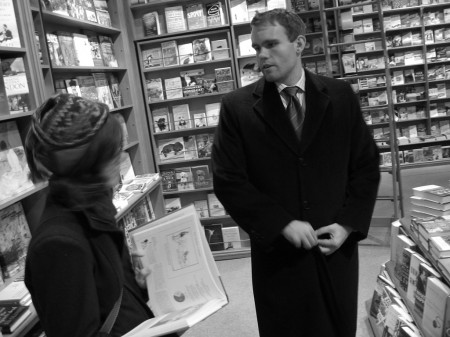
Despite the end of the Cold War, there remains some possibility of a major nuclear exchange between some combination of those world powers with more than a couple of hundred nuclear weapons. Such an outcome could arise through accident or miscalculation, unauthorized launch, or simply through the progressive stressing of the situation, in a manner akin to the Cuban Missile Crisis in 1962, the Yom Kippur War of 1973, of the Able Archer exercise in 1983.
Martin Hellman – one of the three civilian inventors of public key cryptography – has written a piece describing some statistical ways through which we could contemplate the risk of global nuclear war, as well as evaluate it relative to other threats. As a near-term nightmare scenario, the massive use of nuclear weapons surely exceeds the threat posed by climate change: climatic change across a decade is highly abrupt, whereas the time between the decision to use nuclear weapons and the generation of mass casualties would likely be only minutes.
Based on the frequency with which near misses have taken place, Hellman argues that the perpetuation of the current global nuclear situation carries a 1% per year risk of mass nuclear exchange. He estimates that this exceeds the risk of living beside a nuclear power plant by 1000 to 1 and has a clever rhetorical device for making that concrete:
Equivalently, imagine two nuclear power plants being built on each side of your home. That’s all we can fit next to you, so now imagine a ring of four plants built around the first two, then another larger ring around that, and another and another until there are thousands of nuclear reactors surrounding you. That is the level of risk that my preliminary analysis indicates each of us faces from a failure of nuclear deterrence.
Surely, if his estimate is anywhere near correct, all the ongoing concern about new nuclear power plants should be superseded more than one thousandfold by concern about the state of security in the face of nuclear war. After all, everybody lives with the risk associated with global thermonuclear war and nuclear winter. Only those living fairly close to nuclear power plants bear acute risks associated with meltdowns.
Hellman’s warning is akin to the one repeatedly sounded by former US Defense Secretary Robert McNamara, who himself revised the American nuclear warplan for the Kennedy administration in 1963. In both cases, the suggestions are similar: work to reduce the number of weapons, increase the time required for anybody to use them, and avoid the complacent belief that the lack of explosive accidents or attacks since the Second World War proves them to be impossible.






